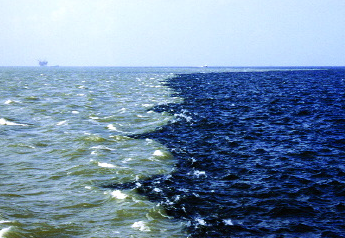By Nicole Wise on Sep 18, 2012 12:08:00 PM
Strict Legislation
The green movement has been so contagious that even the government has become caught under its spell.
In 2010, New Jersey passed the strictest cosmetic fertilizer laws in America. There are limits on the amount of nitrogen on a per-acre basis, the times nitrogen can be applied and the type of nitrogen used, and phosphorus is banned altogether (New Jersey Legislation).
Meanwhile, President Obama has declared the Chesapeake Bay a national treasure and has declared war on nitrate and phosphate run off. The Federal Leadership Committee (FLC) was enacted as a branch of the Environmental Protection Agency, and one of their goals is to limit nitrates, phosphates and pesticides entering the waterway (Chesapeake Bay).
A lot of the political commotion is caused from a few inadvertent side effects synthetic fertilizers have been causing when they run off into rivers, lakes and oceans. One of the side effects that have our politicians and green advocates hustling and bustling to issue out new regulations are the formation and expansion of dead zones.
Dead zones are areas in our water systems with a low dissolved oxygen count in the water that makes it difficult and sometimes impossible for marine life to survive. In the worst case, dead zones have no oxygen at all and the body of water is turned into a marine desert, void of life. This is due, in large part, from nitrogen and phosphate run off. Synthetic fertilizer run off has the same effect on marine life as it does our lawns and crops; it makes plants grow. As a result, algae blooms sprout up in frenzy and as they respire and then die, the dissolved oxygen in the water is reduced.
At the moment, there are over 400 dead zones worldwide, with one of the largest located in our very own Gulf of Mexico, amounting to 6,000 to 7,000 square miles in size (that’s the size of New Jersey!). The below photograph is of a deadzone.

State Laws
States are aware of the dangers run off poses to their local waters. Many, like New Jersey and Minnesota, have already taken a stand on chemical fertilizers, which contribute to run off. Others, like Florida, are debating how to approach the subject of anti-chemical fertilizer laws. In fact, certain Florida counties have taken their own measures to enact fertilizer bans. Specifically, Pinellas County has just recently made fertilizers containing phosphorus and nitrogen illegal to use during certain times of the year (Florida Clearwater).
However, no matter the state, chemical fertilizers are being discussed at great length. For instance, Minnesota was the first to pass anti-chemical fertilizer laws in 2004. The law banned phosphorus altogether, which was hurting their lakes. There are some exceptions to the Minnesota anti-phosphorus law, including agriculture and golf courses, but overall, this will hurt chemical fertilizer users (Minnesota Legislation).
Another example is New Jersey. They have passed the strictest cosmetic fertilizer laws in the United States so far, which went into effect in the spring of 2011, drastically limiting the time that chemical fertilizers can be used for both consumers and professionals. The new timeframe that professionals can apply chemical fertilizers is from March 2 to November 31 only. They have also prohibited chemical fertilizer applications during or just before rainfall onto certain surfaces and have prohibited chemical fertilizer usage 25 feet from the coast (with certain strict exceptions). Furthermore, they have restricted the amount of nitrogen, which cannot exceed an annual total for all applications of 4.24 pounds per 1,000 square feet. They have also restricted the ingredients used in chemical fertilizers. Starting January 5, 2013, at least 20% of the nitrogen in fertilizers must be slow releasing, and phosphorus cannot be used at all (with certain exceptions) (New Jersey Legislation).
If you are located in the northeastern region of the United States, click here for a great source on chemical fertilizer regulations.
The Government’s War on Fertilizer
On May 12, 2009, President Obama declared the Chesapeake Bay a national treasure and signed off on an executive order outlining his mission to restore and protect the Bay. The FLC was put together with the purpose to create an action plan to carry out the executive order’s mission. Each fiscal year, the FLC creates a new action plan to continue to protect and conserve the Chesapeake.
By September 9, 2009, the FLC pieced together a list of recommendations for the executive order. Some focused on water quality and expanding scientific research; others focused on agricultural practices. The FLC understands the threat phosphate and nitrate run off poses on the Bay and has seen what effects the run off has had on the water already. In their fiscal year 2011 action plan, the FLC already decided to target agricultural pollution. In fact, they implemented a Bay Enforcement Strategy for storm weather and agriculture in September 2011. They already are impacting the chemical fertilizer markets in the watershed area, and this is only their first of many action plans (Chesapeake Bay).
Where Does This Leave Lawn Care?
New and upcoming regulations are going to make business in the lawn care and synthetic fertilizers industries torturous. It may even mean a loss of profits for many lawn care companies and farms in order to meet the government’s expectations. It may be time to make the switch to a bio nutritional product like Holganix in order to exceed government regulations. Holganix is 100% organic and can reduce the need for synthetic fertilizers by as much as 90% while retaining a cost-effective approach. Learn more about Holganix here.
Works Cited:
Chesapeake Bay Executive Order:
New Jersey Legislation:
http://www.nj.gov/dep/healthylawnshealthywater/
Florida Legislation:
Minnesota Legislation:
http://www.mda.state.mn.us/protecting/waterprotection/lawncwaterq.aspx
Mississippi River Basin:
Are they the next target for fertilizer regulations?
Image Work Cited:
Deadzone image from: http://serc.carleton.edu/images/microbelife/topics/Foreducators_deadzone.jpg














